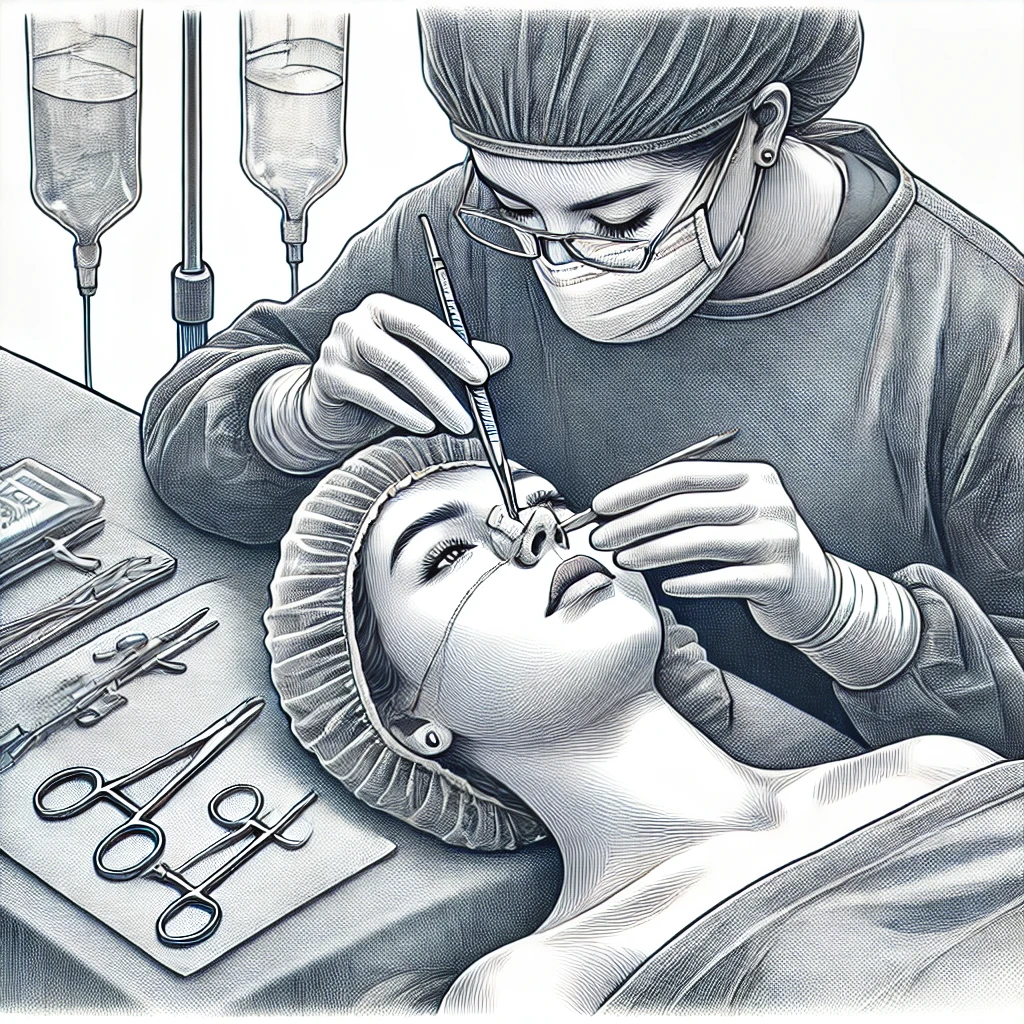How is Rhinoplasty Surgery Performed
How is Rhinoplasty Surgery Performed?
Purpose and Common Causes of Rhinoplasty
The aim of rhinoplasty is to improve the appearance of the nose, as well as to correct congenital or traumatic deformities. Aesthetic reasons include correcting the nasal arch, shaping the tip of the nose and narrowing the nostrils. Functional reasons usually include the elimination of respiratory problems such as septum deviation, nasal polyps, concha hypertrophy, commonly known as nasal flesh growth.
Preoperative Preparation Initial Examination and Assessment Health History and Physical Examination
Before rhinoplasty surgery, the first examination with our surgeon Assoc. Dr. Sema Koç is very important. In this examination, your health history is evaluated and the current condition of your nose is examined. The upper respiratory tract is evaluated with endoscopic cameras with high image quality and the actions to be taken are determined. Important details in your health history, such as your chronic diseases and medications you use continuously, are critical for planning the surgery and evaluating possible risks. During the physical examination, factors such as your nasal structure and skin type are also taken into consideration.
Surgery Planning
Surgeon's Assessment and Operative Goals
Our surgeon Assoc. Dr. Sema Koç takes into account the structure of your nose and your surgery goals when deciding how the surgery will be performed. The aim of the surgery is to achieve a natural and aesthetically pleasing result. In this process, our surgeon Assoc. Prof. Dr. Sema Koç shares the technical details of the surgery and possible results with you. You will also be informed about the risks of the surgery and the healing process. During the physical examination and the video, photo and simulation studies to be performed after the examination, you will meet face to face with your physician and explain your wishes to him and ensure a good planning.
Things to do before surgery
Medicines and Diet
You may need to stop taking certain medications before surgery. Blood thinners, in particular, may increase the risk of bleeding during and after surgery and should be discontinued or replaced with other medications as advised by your prescribing doctor. In addition, a healthy diet and drinking plenty of water will help your body to better prepare for surgery.
Smoking and Alcohol Use
Smoking and alcohol use can negatively affect the healing process. Smoking slows healing by reducing blood circulation and increases the risk of infection. Alcohol can increase the risk of bleeding. Therefore, it is recommended that you stop smoking and drinking alcohol before and after surgery.
Stages of Surgery
Types of Anesthesia
General Anesthesia
During rhinoplasty surgery, general anesthesia is usually preferred. General anesthesia allows you to sleep completely and not feel any pain during the surgery. The anesthesiologist monitors your vital functions throughout the surgery and ensures that the surgery is completed safely.
Local anesthesia
In some cases, local anesthesia may also be preferred. Local anesthesia numbs only the nasal area, eliminating the sensation of pain. This type of anesthesia is usually suitable for smaller and simpler procedures.
Surgical Techniques
Closed Rhinoplasty
Closed rhinoplasty is performed with incisions made through the nose. This technique is aesthetically advantageous as it does not leave any scars visible from the outside. However, since the surgeon’s field of vision is limited, this technique may not be preferred in some cases.
Open Rhinoplasty
Open rhinoplasty is performed through a small 2-3 mm incision between the nostrils. This technique gives the surgeon a wider field of vision and allows for more detailed shaping of the nasal structure. Open rhinoplasty is often preferred for the correction of complex nasal deformities.
Other Languages
Author





